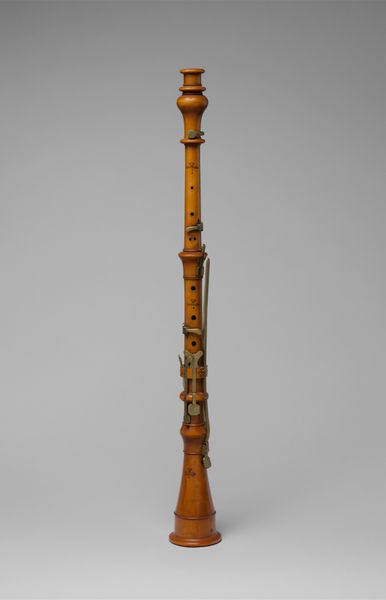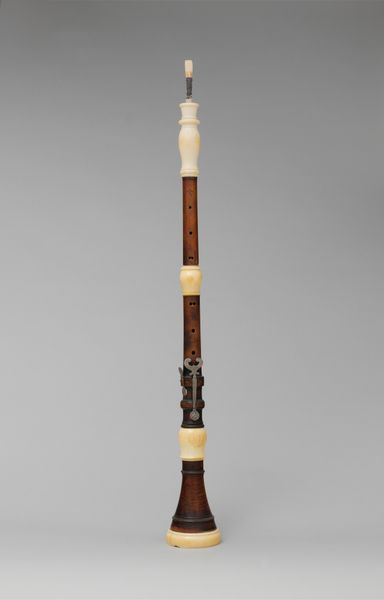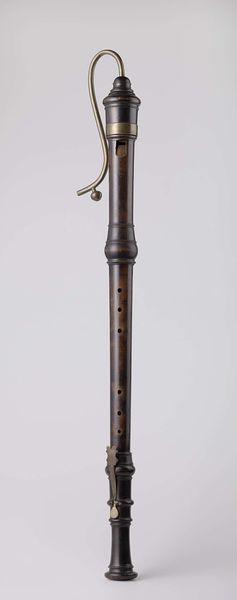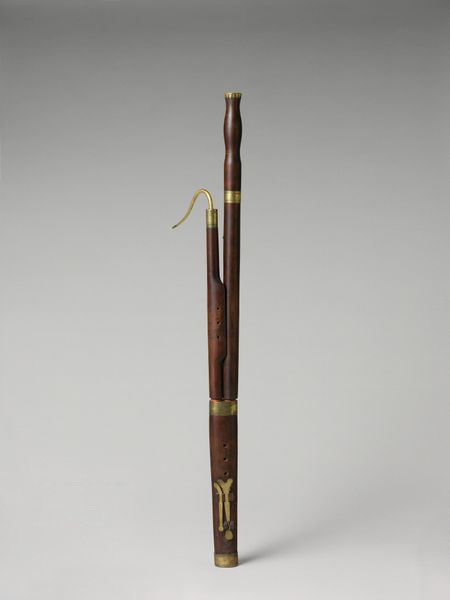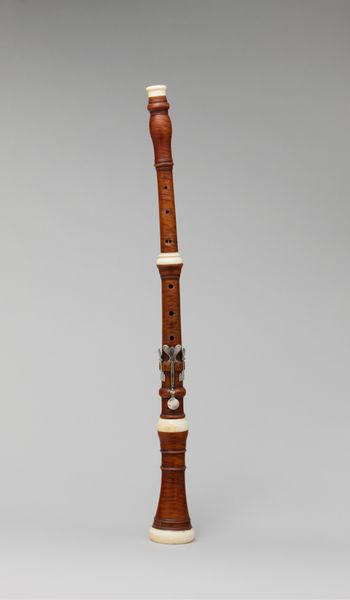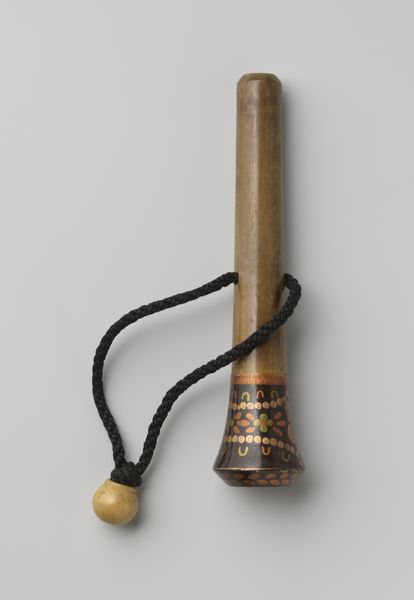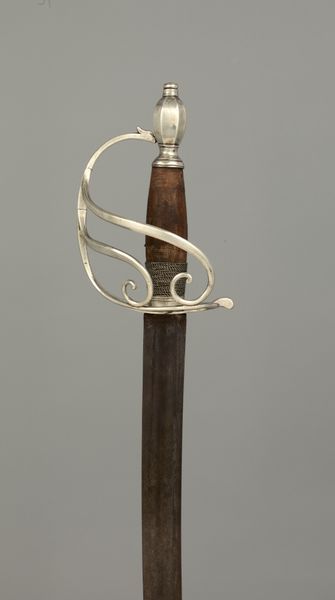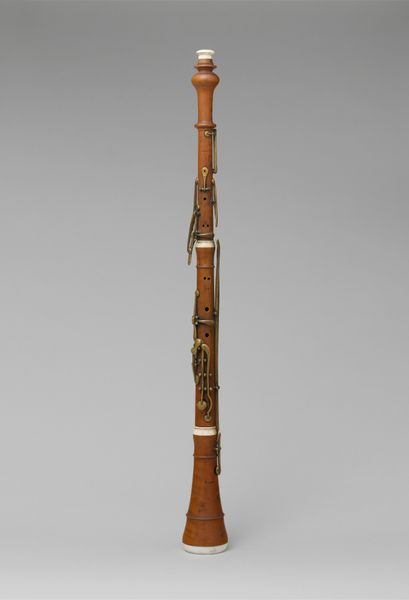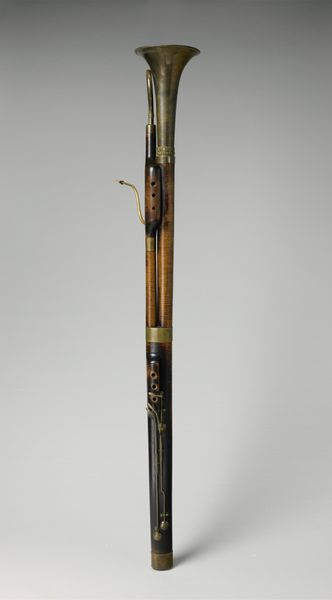
brass, photography, wood
#
brass
#
photography
#
wood
#
musical-instrument
#
watercolor
Dimensions: Length (end to end) 1146 mm, Length of tube +/-2438 mm including crook and reed, Diameter of bell (opening) 76 mm Length of crook +/- 366 mm Length of wing section +/- 495 mm without tenon Length of butt section 425 mm Length of long section +/- 530 mm without tenon Length of bell 215 mm
Copyright: Public Domain
Editor: Here we have what appears to be a photograph of a “Bassoon in C” from 1771, crafted in the Jeanneret workshop. It seems to be made of wood and brass, displayed vertically. There’s a simple elegance to its form, almost austere. What can you tell me about it? Curator: Well, looking at this bassoon, one can't help but consider the socio-political context of its time. The late 18th century saw the rise of public concerts and opera houses, creating new markets for musical instrument makers like Jeanneret. This instrument, likely commissioned for professional use, speaks to the era’s growing demand for sophisticated musical expression beyond the confines of the aristocracy. Do you notice the seemingly delicate nature of the instrument? Editor: Yes, the craftsmanship looks quite refined, though it also seems relatively simple in design. Curator: Exactly. That relative simplicity might also hint at broader social accessibility, perhaps aiming for a wider audience beyond the exclusive circles. Now, where was this piece placed after its construction? The fate of these instruments – their use in specific orchestras, performances – is a fascinating lens through which to examine musical patronage and evolving performance practices. Do we know its provenance? Editor: According to the information, it's housed in the Metropolitan Museum of Art in New York. Curator: Ah, its presence in the Met certainly elevates its status, transforming a functional object into a cultural artifact. How might its meaning change over time when transferred to an art museum context? Think about how it’s perceived now versus how it was in 1771. Editor: That's a fascinating perspective. It makes me consider its journey from a functional musical instrument to a museum object, and the impact that transition has on its significance and meaning. Curator: Precisely. Understanding that transformation reveals so much about the ever-changing dynamics between art, society, and institutions. Editor: Thank you. That was very insightful; I hadn't considered the political impact of musical instruments before. Curator: It is an area where artistic creation intertwines with social and historical forces, giving an enriching depth and insight.
Comments
No comments
Be the first to comment and join the conversation on the ultimate creative platform.
